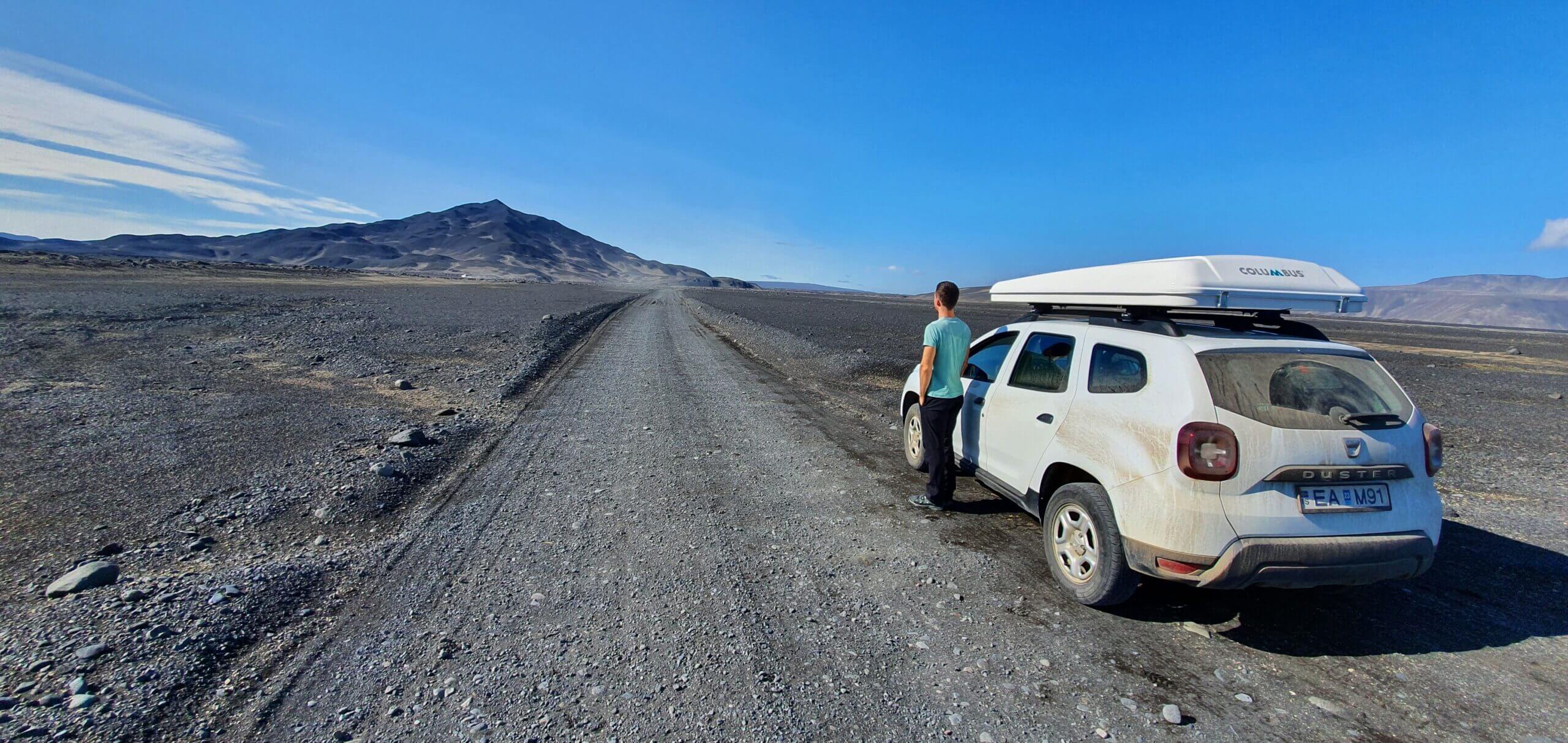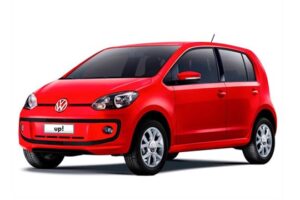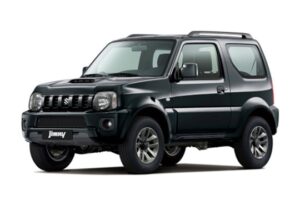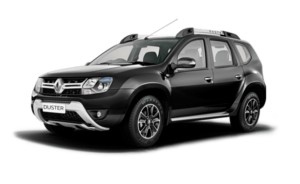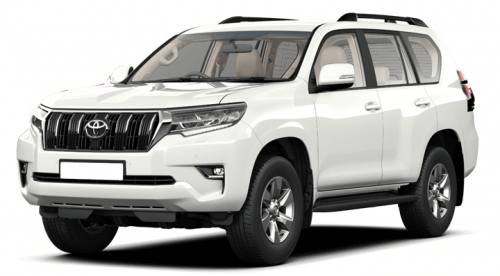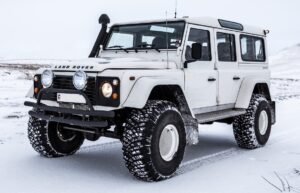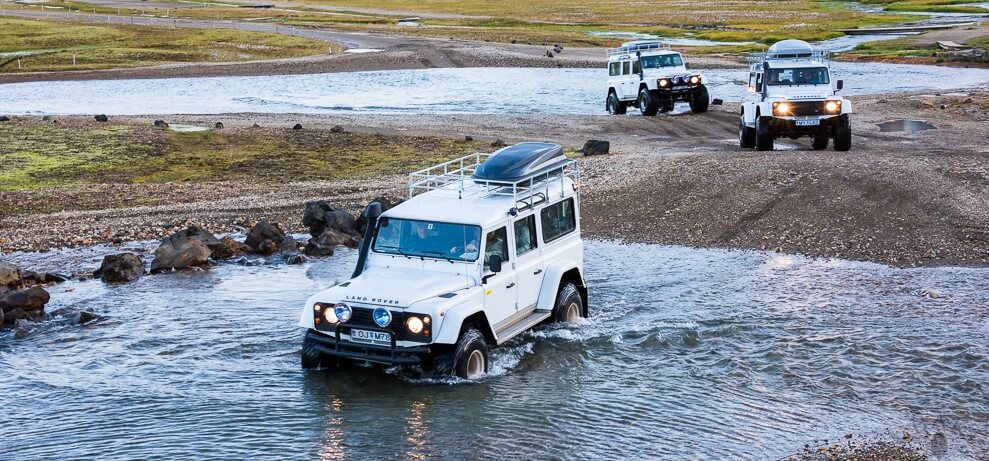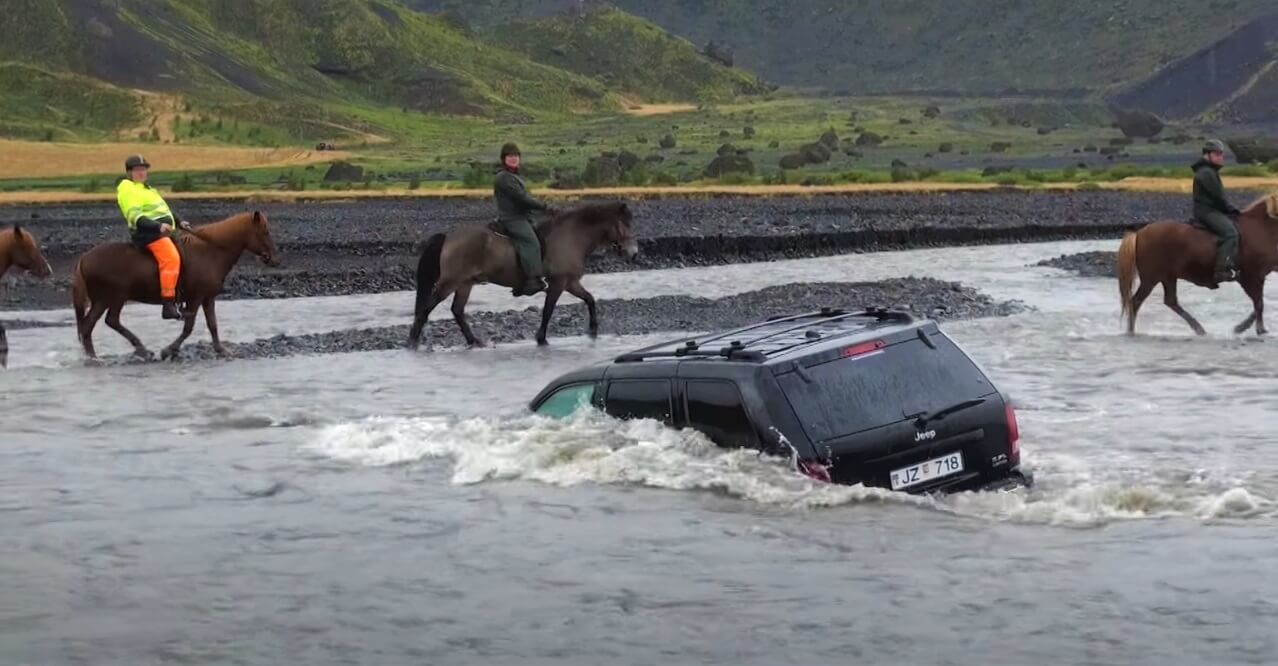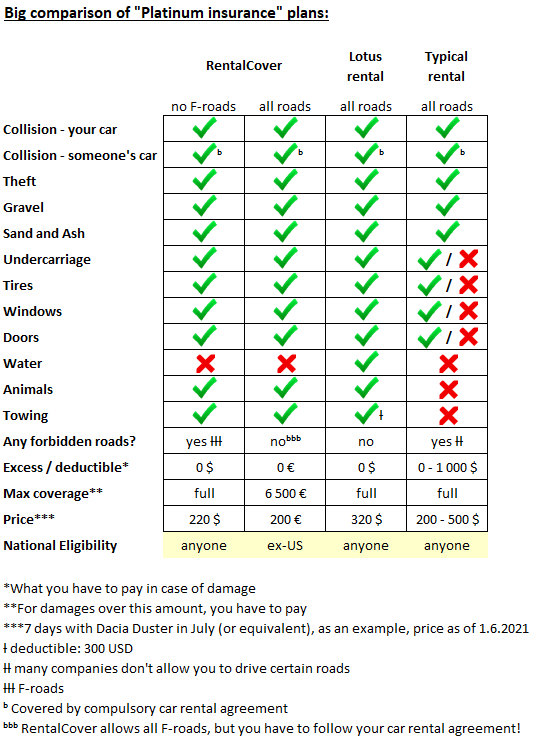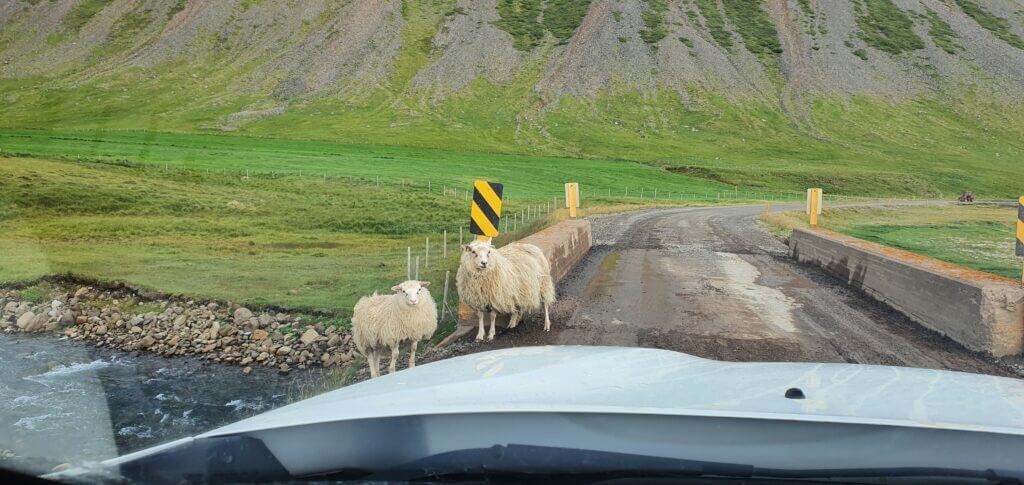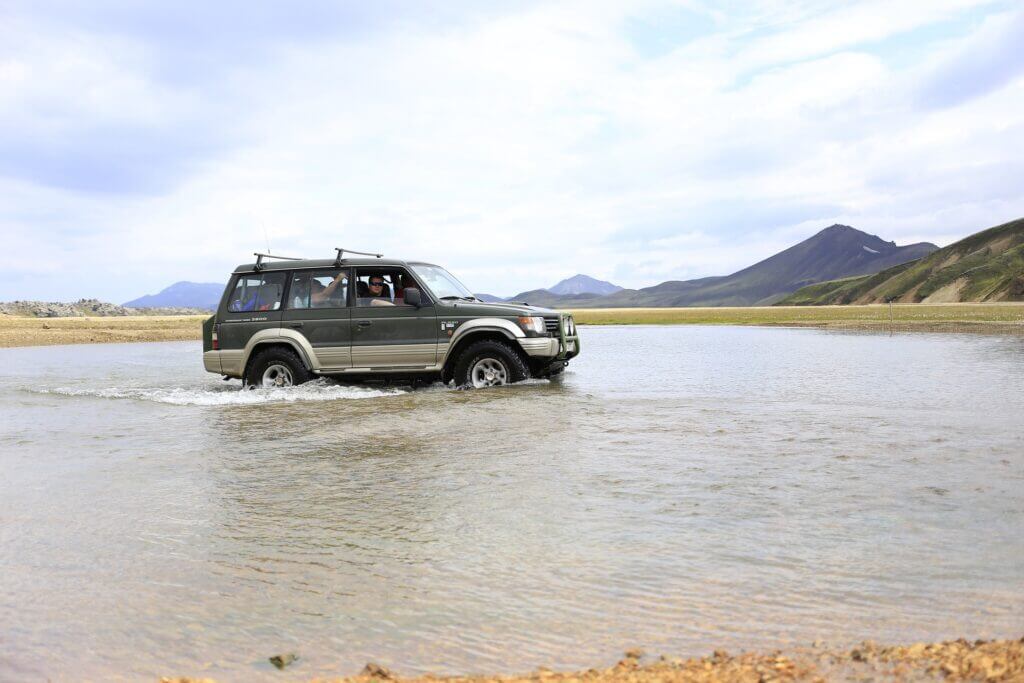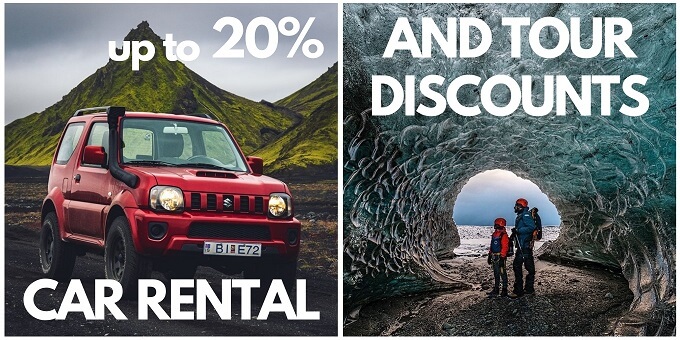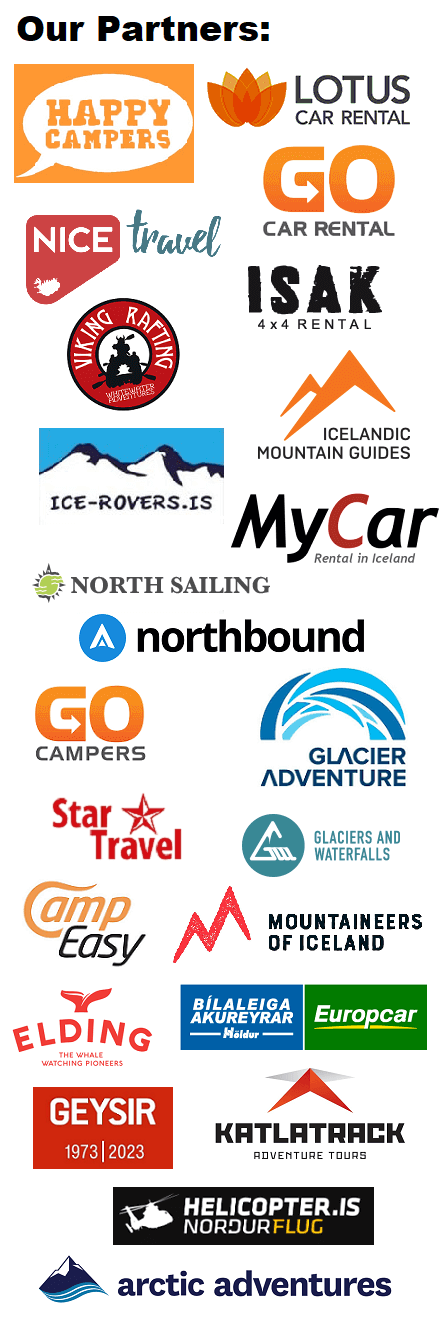River crossings are the main challenge of Icelandic F-roads. If it wasn’t for them, 95% of F-roads would be easy to pass. However, they do exist and create a significant obstacle. Improper river crossings may cause huge and expensive damages to your car. In extreme situations, even your life may be at stake. That being said – prepare thoroughly for your river crossings! Here is a detailed guide on how to cross a river in Iceland.
With river crossings, it all comes down to HOW, WHERE and WITH WHAT.
By HOW I mean general rules for a safe river fording. It’s essential to adhere to them, no matter how big your car is.
By WHERE I mean where are you crossing. What is the type of river? How big is it? What is the season? How much did it rain recently?
By WITH WHAT I mean the type of vehicle you are operating. Generally said, the bigger the better – but it’s more complicated.
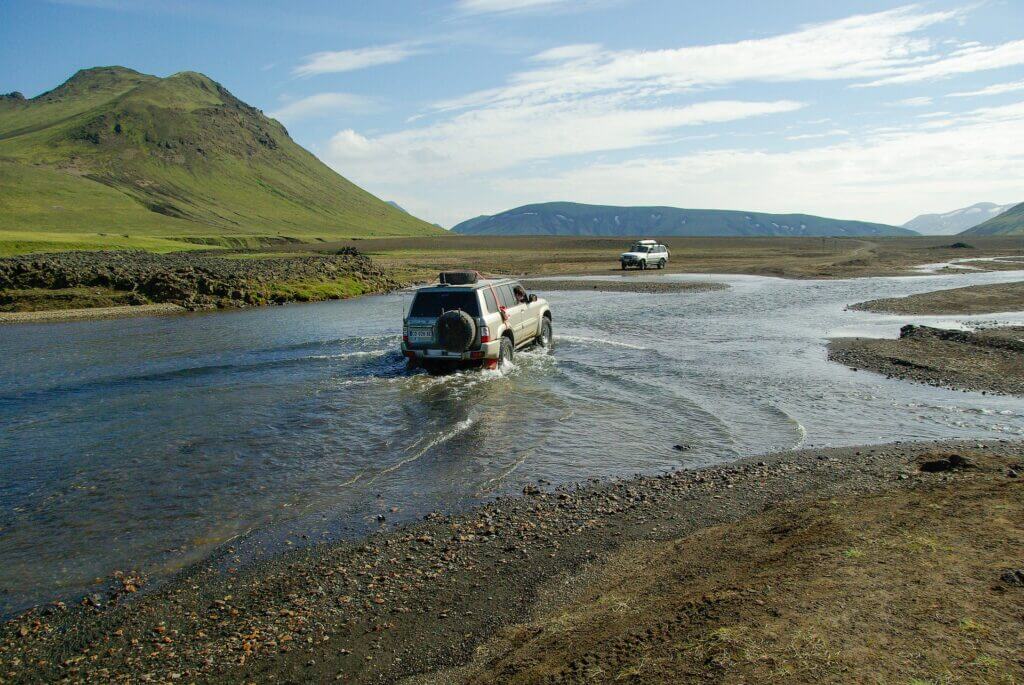
How to safely cross Icelandic rivers? (HOW)
- Make a plan. Do you have a proper car? What types of rivers are in your way? Are you equipped sufficiently? Think before.
- Check by searching for the road
- Check by searching for the place
- Check by searching for the area
- Check the road conditions. If they say impassable, don’t even try it yourself. Isak 4×4 can help you with their Convoy driver or sit-in guide. If they say passable, read further. What does it mean passable, impassable, and no winter service? Here is the explanation of Icelandic road states.
- Examine the river.
- So you arrived at the river. If you can see with your eyes that it’s a small river or even just a pond, you may usually proceed with passing. What’s a small river? Read below in “WHERE“.
- If you can’t assess the depth with your eyes, find out physically. Go into the river. How are you supposed to do that in ice-cold water? Get inspired by how we’ve done it.
- Alternatively, wait for someone else (ideally with a similar car) to pass.
- Compare the river to your car. The essential thing is, whether your air intake is high enough above the water level. But that’s not the only thing. See below in “WITH WHAT“.
- Stay inside yellow markers. Those mark the area allowed for crossing (and usually also shallowest). They are situated on the borders of a passable area.
- Go for the shallowest part.
- If it’s a medium-sized or even a bigger river, it’s really important to cross it through the shallowest part. This is usually NOT the exact middle of the river crossing, but rather its sides.
- This is usually NOT where the river is calm – that’s typically the deep part. Better find a part where you can see the stream of river running into pebbles and cross on that pebbles.
- Turn 4×4 mode on.
- Drive slowly.
- First, max second gear, around 10kph to create a little “wave” around your car. Ride that wave.
- If you drive too quickly, water will splash into your engine and your car may be dead. See below in “WITH WHAT“.
- Don’t stop. Don’t switch gears. If you do, you may not get the car going again. Don’t get scared by your car shaking inside the river, just go steady.
- Down the stream. If it’s possible, go with the stream, not against it. This will lower the chances the water will get into your engine.
- Stay near the rope. Sometimes there’s a rope in the river. It’s not there by coincidence. Rangers installed it there typically to indicate the shallowest part. Drive near the rope, this should be the best spot to cross the river.
Don’t want to fear paying for your drowned car? Use Lotus! Now with our 5% discount.
What types of river crossings are in Iceland? (WHERE)
The basic categorization can be made according to the depth of the river crossing.
- PONDS
- Up to 20cm / 8 inches.
- If the depth of a river crossing is this shallow, you don’t have to bother much about crossing at all. It’s doable with any car, even with a 2wd one.
- SMALL
- 20 to 40cm / 8-16 inches.
- Here some ground clearance of your car starts to make sense. I consider 40cm to be still a small river but it’s already a non-trivial crossing. If you do it wrong, you may end up like this.
- MEDIUM
- 40 to 70cm / 16 to 28 inches.
- This is already some decent river crossing. You will probably not get drowned but you may waste your car easily.
- It’s still a manageable crossing though, even for beginners! You just have to adhere to river crossing rules strictly and drive a proper car.
- Examples: F208 south, F235, F224, F910
- BIG
- More than 70cm / 28 inches.
- I would avoid these at all costs if I was a river crossing beginner. Not only may you waste your car, but you could also get yourself seriously injured, if not killed.
- You need to have a combination of a) proper car, b) adhering to river crossing rules, and c) experience
- Examples: F233, F249, sometimes F26, F88, F210
The depth of the river is the single most important factor when it comes to a river crossing. There are of course several other aspects influencing your fording:
- Has it rained heavily for a few days? Add some centimeters on top of your expected river depth.
- Is it just early summer? Glacial rivers will have substantially more water compared to the late summer.
- What is the riverbed like? Is it stony or muddy? If it’s muddy, it will be harder for you to ford.
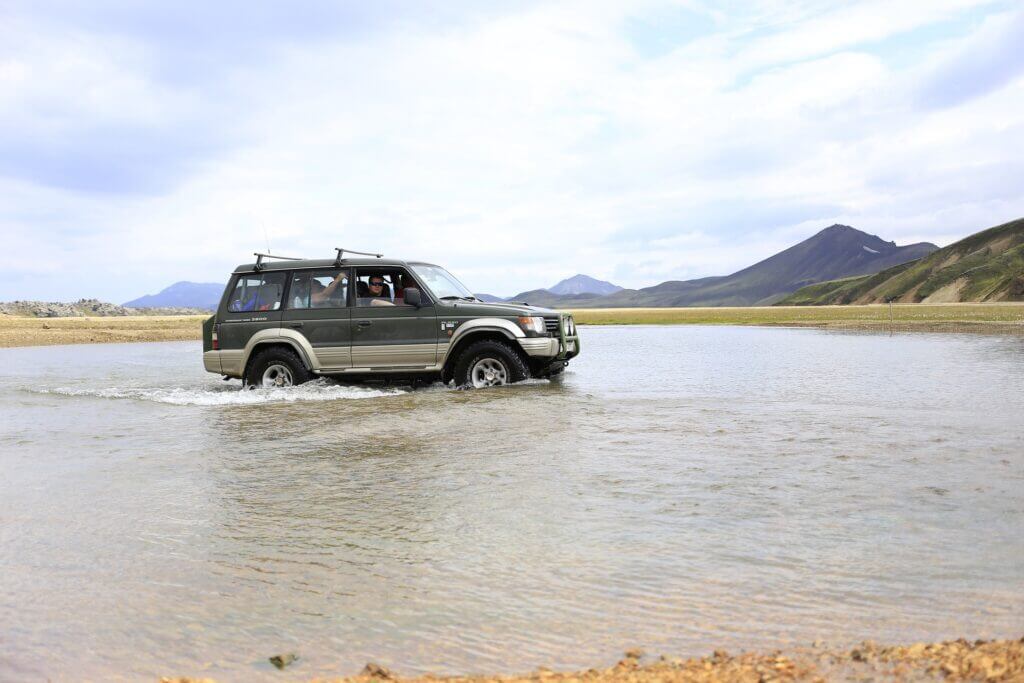
What car do I need to cross rivers? (WITH WHAT)
Ok now you know HOW to cross and WHERE will you be crossing. It’s time to get to WITH WHAT. A right car is essential. But how are you supposed to know what car is the right one? Of course, we are talking only about 4wd/4×4 now:
- The bigger the ground clearance (and wheels), the better. Because of several reasons. Firstly, your air intake will be higher (see below). Secondly, the chances you will get stuck in a river are lower. Thirdly, the chances, you will damage your undercarriage are lower.
- The higher the air intake, the better. Study this one carefully. The main risk with river crossings is flooding your engine with water (then the engine usually becomes dead). This happens once the water reaches an air intake of your car. The water level should be AT LEAST 10cm/4inch below your air intake!
- The stronger engine, the better. Inside rivers, some additional horsepower may only help. BUT – use your horsepower on the lowest/2nd lowest gear only when crossing the rivers!
- Snorkel is a plus. If your car has a snorkel installed, it basically deals with point number 2. It adds considerable height to your air intake. It’s not everything, though. You may have a snorkel, but with the too-low ground clearance, you could still get stuck in a bigger river.
When there are only PONDS in your way, you may basically choose any car.
When there are SMALL RIVERS in your way, ideally choose any SUV or 4wd car.
When there are already MEDIUM RIVERS in your way, choose your car wisely and better opt for at least a medium-sized SUV.
When there are BIG RIVERS in your way, either avoid them at all or if you really want to, then choose the super-jeep.
We also offer you FREE discount codes for several Icelandic car rental companies.
Example of the correct river crossing
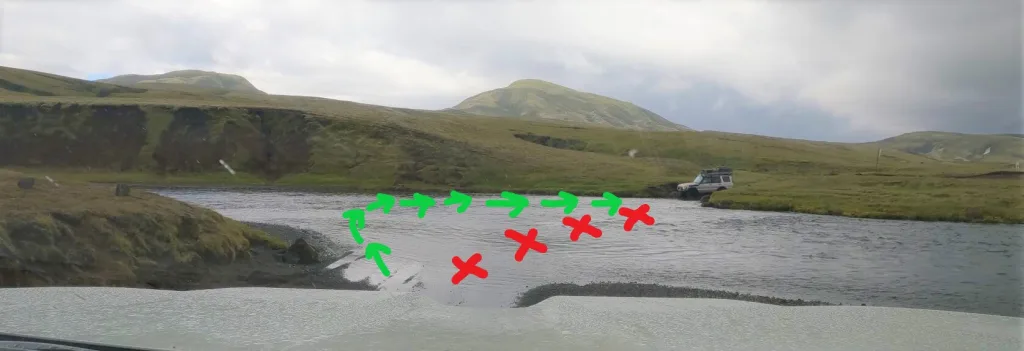
Correct river crossing of Sydri Ofaera river on F233
Every river crossing in Iceland is specific, and road F233 is a nice example of it. Syðri-Ófæra river crossing is the biggest obstacle of the notoriously known F-road Álftavatnskrókur or F233. Sydri Ofaera is typically a big river and also a very specific and unmarked river fording. The correct crossing is not obvious at first glance, but locals know it well.
The trick is, you should NOT ford straight. Rather, you have to drive in a U-shaped pattern. BUT – not to the east where the river is deep, but to the west, where it is shallow. OK, and why not go straight? Because there are huge boulders in the way that could easily stop even a super jeep.
Example of how NOT to cross the river
The video below from our friend Lucas is a nice example of how NOT to cross the river in Iceland. The driver has done nearly everything wrong:
- Drove through the deepest point (middle), instead of the shallowest parts (both sides where the ropes are)
- The river depth was too deep for Dacia Duster (in the middle), the car almost died and the driver was just lucky the engine started again.
- Blocked the road for another car, taking pictures and even being rude to them!
- Driving too fast through the second river crossing.
Below is a beautiful example of possibly the biggest mistake you should avoid when crossing rivers in Iceland. Never go fast! You will flood your engine this way. Exactly as the guy below flooded his engine. The car was dead within a second.


